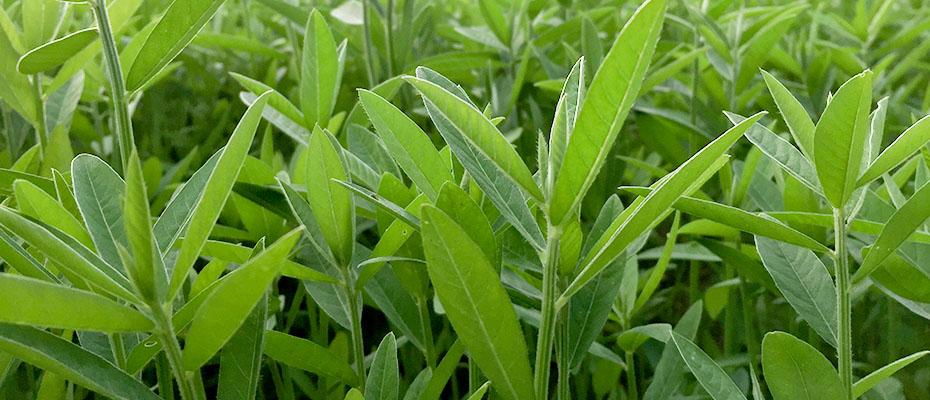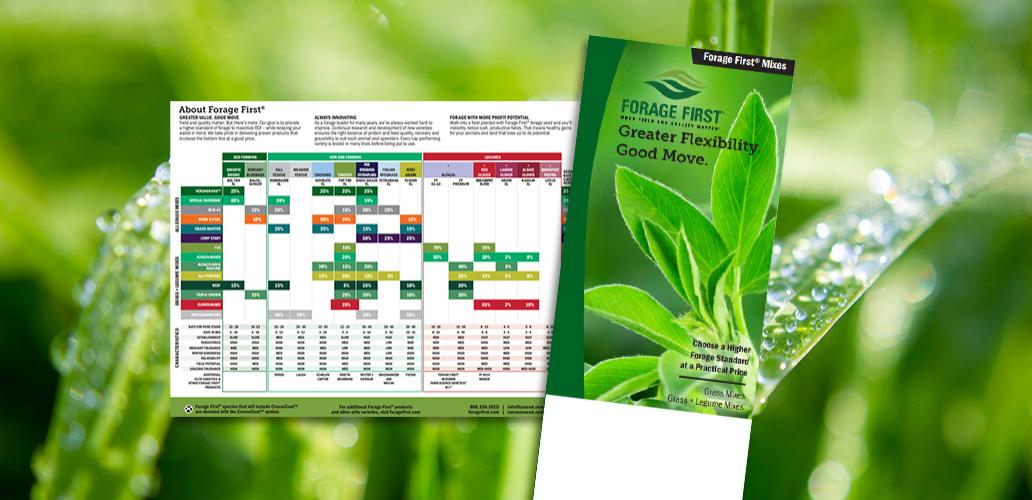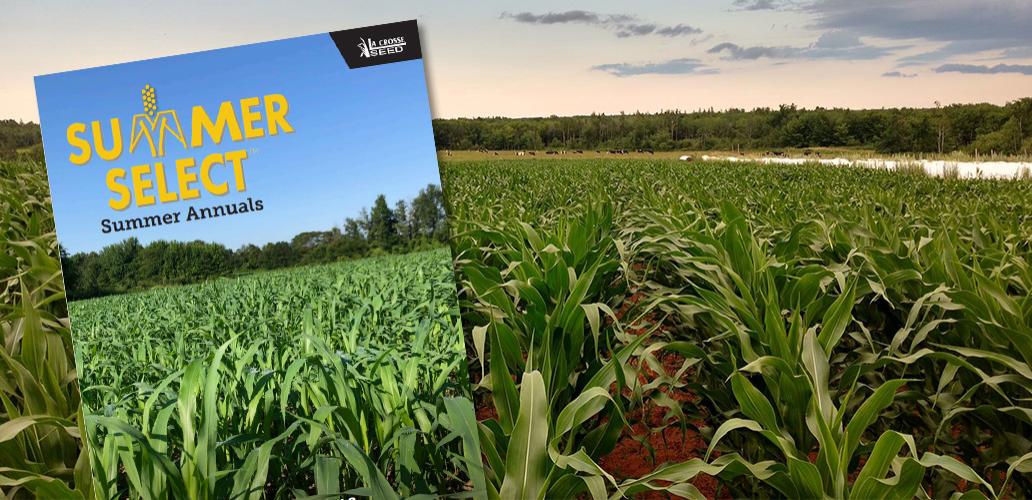Forage First Guide I Summer Select Guide
Greater Value. Good Move. Yield and quality matter. But there’s more. Our goal is to provide a higher standard for forage to maximize ROI– while keeping your wallet in mind. We take pride in delivering proven products that increase the bottom line at a good price.

Sunn Hemp cover crop legume seed is a warm season legume, upright and quick in its growth habit. Sunn Hemp needs 60°F soil temps before it can planted and will kill at the first signs of frost. Higher seeding rates of Sunn hemp will help with weed suppression.
CHARACTERISTICS:
Non-Forage Benefits:
1 = Poor; 5 = Excellent
Compaction Alleviation: 2
Weed Suppression: 4
Biomass Production: 5
Erosion Control: 3
Disease/Pest Control: 3
Pollinator/Beneficials: 4
P & K Cycling: 3
Ease of Establishment: 3
Nitrogen Fixer/Scavenger: Fixer
Nutritional Value:
Values Vary Greatly Depending on Maturity
Crude Protein: 25
NEL¹ Mcal/lb.: Varies Greatly
ADF%²: Varies Greatly
NDF%³: Varies Greatly
TDN: Varies Greatly
DM Tons/Acre: 1-5
Days to First Harvest: 40-45
Days to Next Harvest: –
¹- Net Energy for Lactation = Energy available after subtracting digestive and metabolic losses
²- Acid Detergent Fiber = Low values mean more digestible
³- Neutral Detergent Fiber = Low values mean cows can eat more
Ranking (Good, Better, Best):
Graze: Better
Baleage: Good
Chop: Best
MANAGEMENT:
Considerations
- Prefers soil pH levels above 6 (6–7)
- Kills at first frost, or control by mowing or herbicide at first flower for maximum benefit
- Residue (green manure) should be incorporated while still green
- In far southern areas (below 28° latitude), sunn hemp will produce seed which can be toxic to livestock
• Produces significant amounts of nitrogen in 60 days depending on conditions
• Tolerant of dry conditions and low fertility
• Can add up to 5,000+ lbs. of biomass per acre in 7-8 weeks
• Research has shown levels of nematode suppression (root knot, borrowing)

.png)
.png)


.png)










